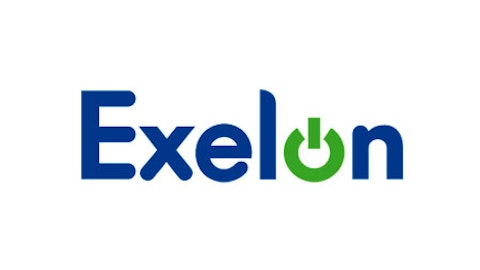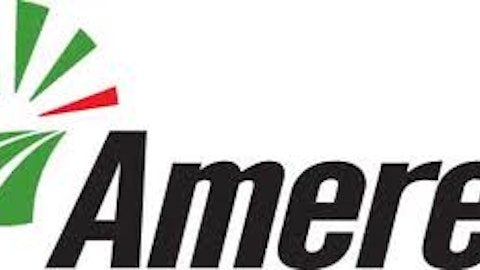I can’t count how many times I’ve heard analysts and commentators recommend Duke Energy Corp (NYSE:DUK). However, what I don’t hear are a lot of facts about what’s going on with the company’s finances. Since most utility stocks are sought after for their dividend income, isn’t it important that investors know whether the dividend is safe?

A common mistake among amateur investors is to assume that all utilities are the same and just compare their yields to determine the stock to buy. The problem is that all utilities are not the same, and as investors in Exelon Corporation (NYSE:EXC) just learned, their dividends are not set in stone. Since companies like Duke, The Southern Company (NYSE:SO), and Consolidated Edison, Inc. (NYSE:ED) are seen as stable dividend payers, investors can be lulled into a false sense of security.
It’s very common for investors to look at a utility’s earnings per share to determine if they can afford their dividend. Duke is expected to earn $4.35 per share in 2013, and their dividend is $3.06, for a payout ratio of 70.34%. On the surface, this looks comparable to Southern Co.’s payout ratio of 71%, or Consolidated Edison’s payout ratio of 64.57%. However, Exelon’s payout ratio using this formula would have been 84.68% before their dividend cut, and just 50% afterward. As you can see, none of these companies has a payout ratio over 100%, so their dividends should have all been safe.
The Real Payout Ratio
The huge problem with using earnings per share is, it doesn’t account for capital expenditures. The way to account for this expense is to use free cash flow instead of earnings per share. In 2011, Consolidated Edison, Exelon, and Southern Co. all produced positive free cash flow. Only Duke reported negative free cash flow.
However, when we look at more recent results, the numbers are troubling. In the most recent quarter, Southern Co. showed a free cash flow payout ratio of just 41.20%, while Consolidated Edison, Duke, and Exelon all produced negative free cash flow.
Since utilities are essentially commodity businesses, a company with a higher operating margin in theory is more efficient. The leader of the pack is Southern Co. with an operating margin of 34.46%, followed by Consolidated Edison at 24.72%. The two laggards are Duke with a margin of 15.93%, and Exelon with a margin of 14.32%. While it’s true Duke’s merger with Progress Energy contributed to their lower margin, it’s a little unsettling that Duke’s margin is only slightly better than a competitor that just cut their dividend.
That One Number
Since one of Exelon’s reasons for cutting their dividend was connected to maintaining their investment grade status, investors need to pay attention to the financial statements of their utility. At first I thought Exelon suffered from an issue with a high debt-to-equity ratio, but that isn’t the case.
In fact, among these four utilities, Exelon actually tied with Consolidated Edison for the lowest debt-to-equity ratio at 0.83. By comparison, Duke’s debt-to-equity ratio is 0.87, and Southern Co.’s ratio is 0.98. So it’s not this ratio that caused Exelon’s management to cut the dividend.
However, when we look at the interest each utility pays on their debt, we find a different story. When I crunched the numbers, I found a disturbing similarity between Exelon and Duke. Exelon’s full-year interest expense was 32.06% of their full year sales. In other words, for every $1 in sales, Exelon paid $0.32 in interest. Since Consolidated Edison and Southern Co. pay $0.26 and $0.20 in interest per dollar of sales, you can see that investors should be more comfortable with these companies.
The negative news for Duke investors is, because of the Progress merger, Duke pays almost $0.40 of every dollar in sales just to cover interest expenses. This literally means that Duke is paying relatively more interest per dollar of sales than Exelon, and Exelon just had to cut their dividend. Now it’s true that Duke may grow their sales enough to bring this ratio in line with their stronger competition, but what if they don’t?
I Just Can’t Do It
It’s easy to recommend staying away from Exelon now that their dividend is 3.8% and analysts expect negative earnings growth in the near future. On the other hand, Consolidated Edison pays a yield of 4.36%, and has one of the lowest P/E ratios, of the group. When you add in the fact that the company has the second highest operating margin, and the strongest balance sheet, it’s easy to see why investors like the stock.
Southern Co. is even easier to recommend with a 4.46% yield, the best operating margin, and the lowest percentage of interest expense to dollar of sales. Southern Co. is also expected to grow earnings by 4.86%, which is faster than any of their competitors. If you have to choose a utility, this one should be at the top of your list.
Duke Energy is a different story. The company’s yield of 4.5% is slightly better than the others, but in most other measures the company isn’t doing as well. They have the second lowest operating margin, the second worst balance sheet, and the highest percentage of interest to dollar of sales. The fact that the company hasn’t consistently generated free cash flow is a major concern. If the company fails to generate significant cost savings from the Progress merger, this “stable” utility’s dividend could be in serious trouble.
The article This Number Says Investors Should Be Concerned originally appeared on Fool.com and is written by Chad Henage.
Copyright © 1995 – 2013 The Motley Fool, LLC. All rights reserved. The Motley Fool has a disclosure policy.




